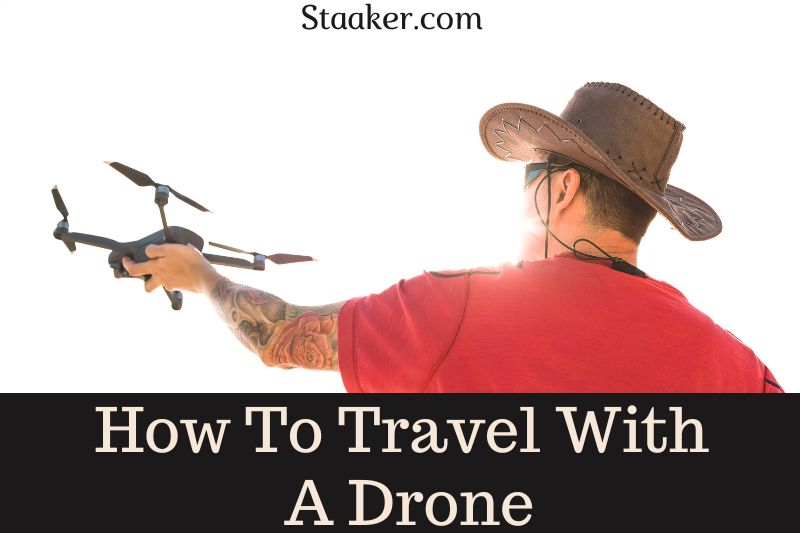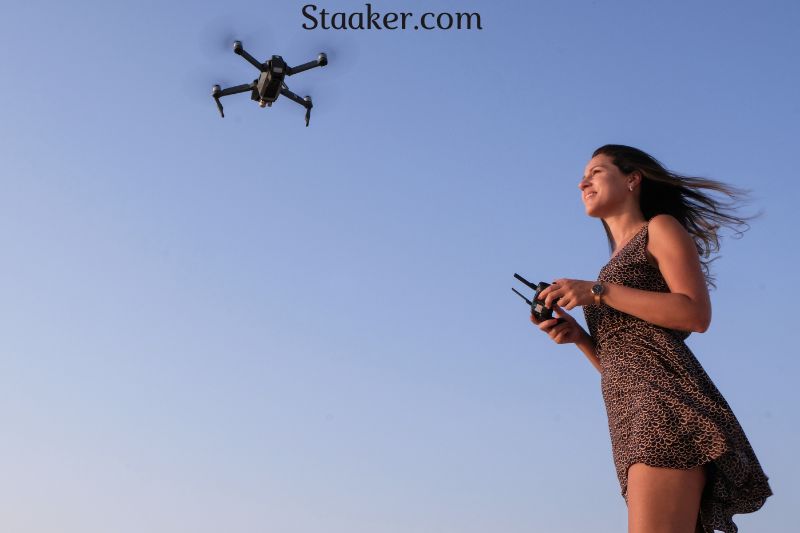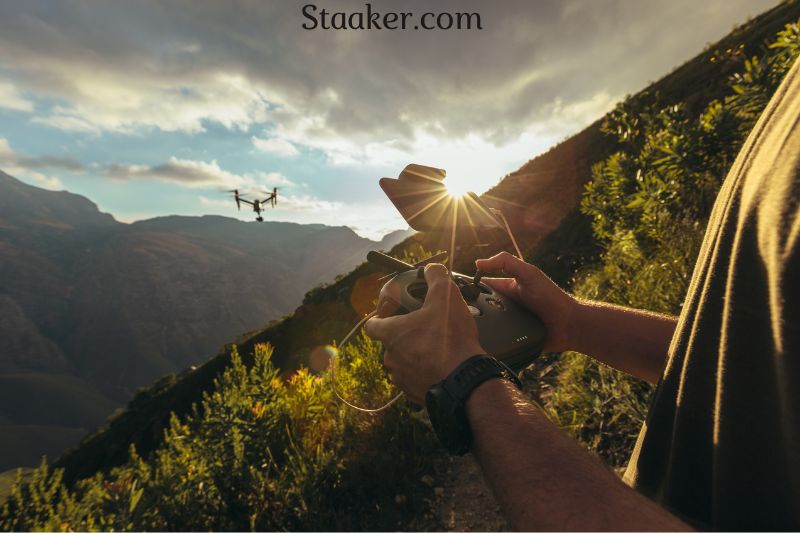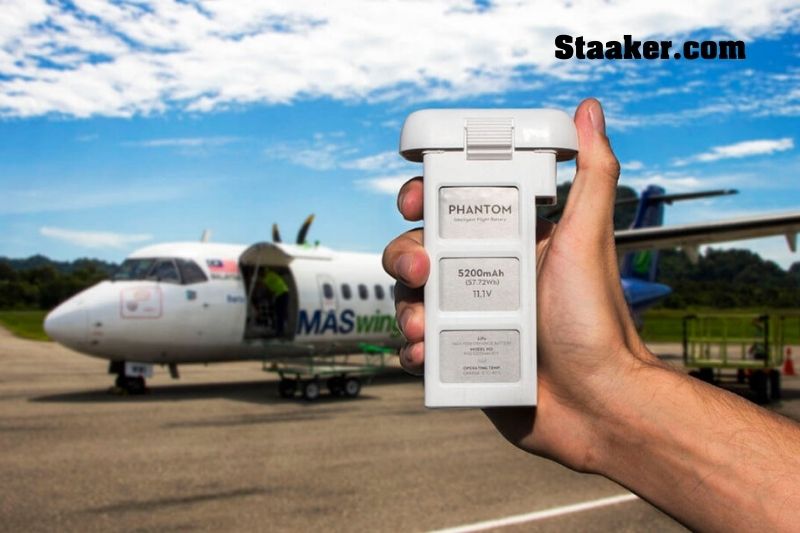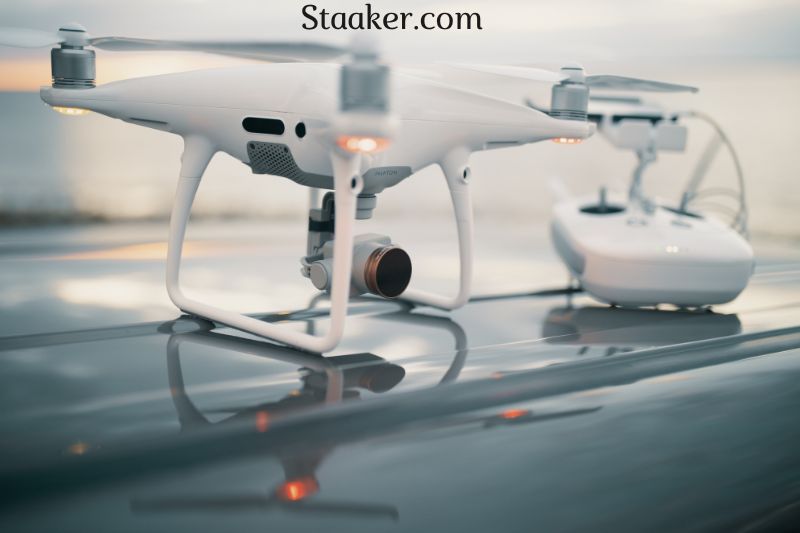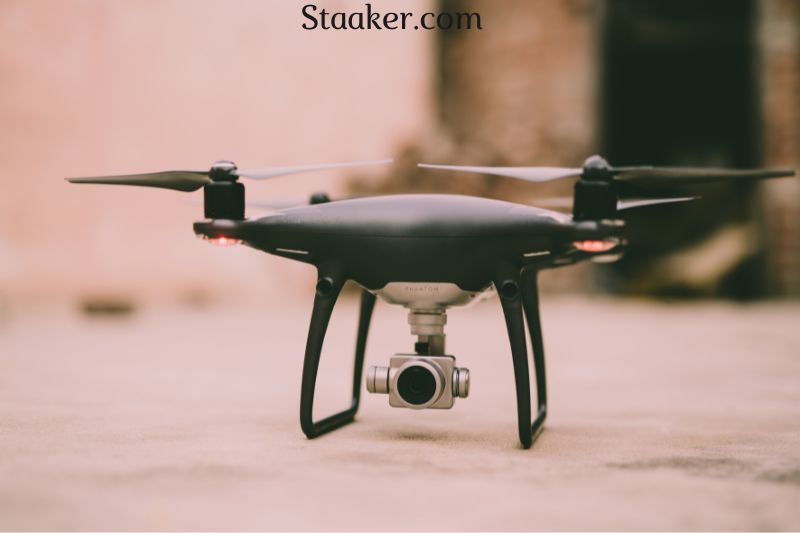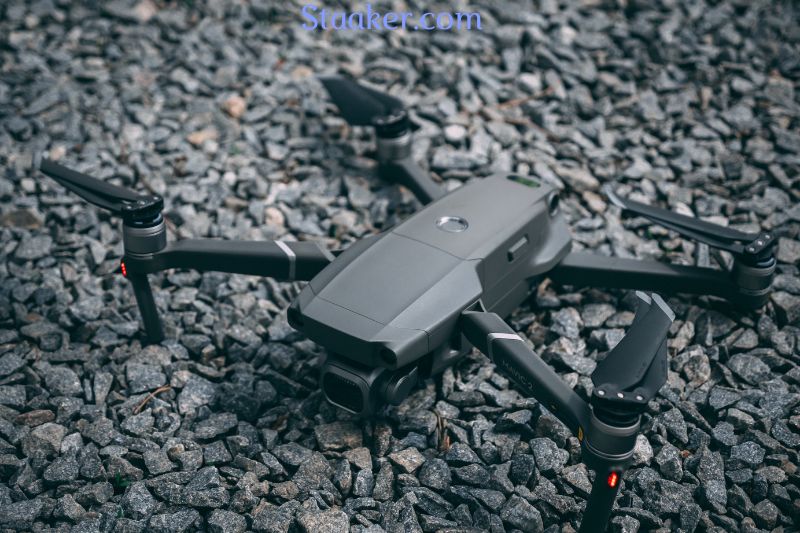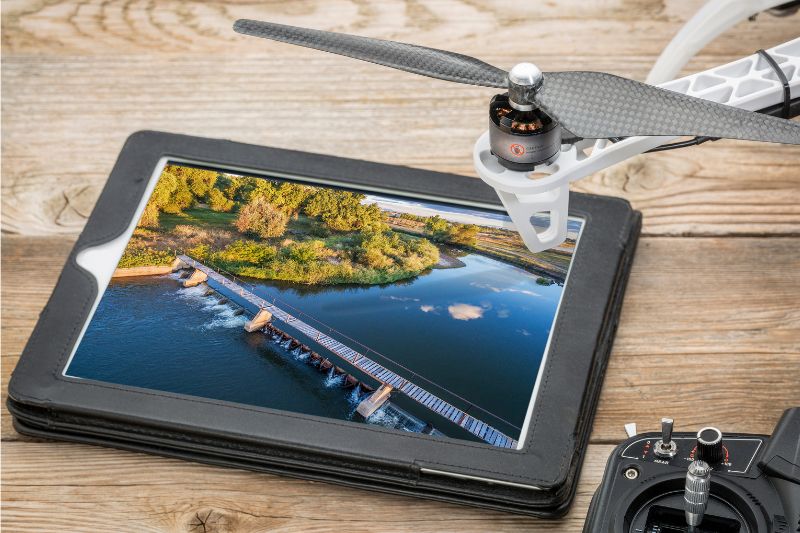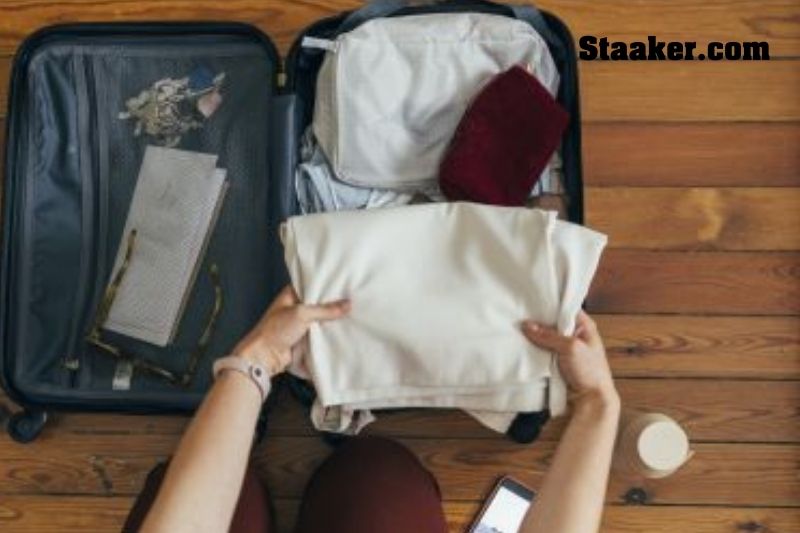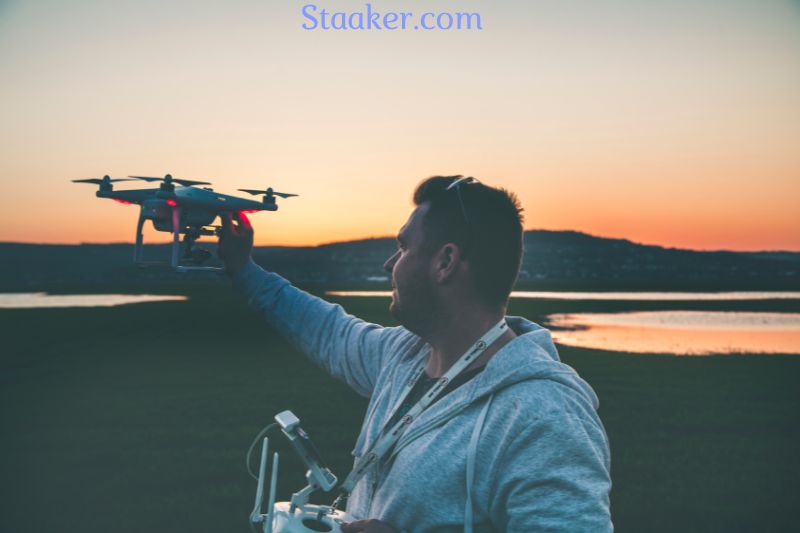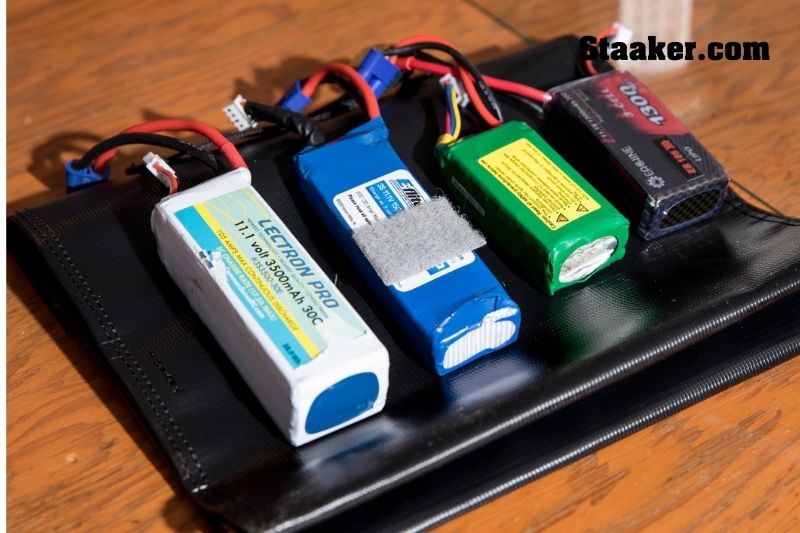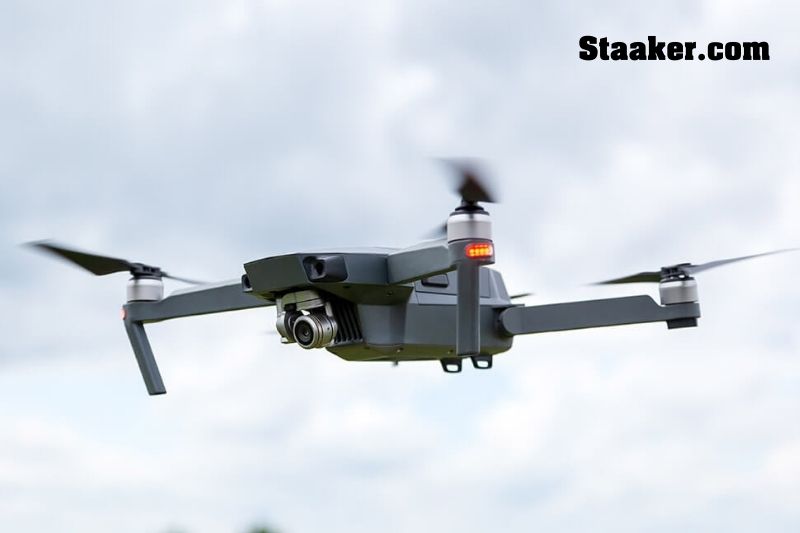Drones are becoming increasingly popular among travelers to capture unique aerial perspectives of their surroundings.
Here are some tips on how to travel with a drone, so you can make the most of this exciting new technology while keeping your safety and the safety of others in mind.
Yes, You Can Bring A Drone On An Airplane, But Certain Restrictions Exist
According to DJI, it is possible to bring a drone on an airplane as either carry-on or checked luggage, depending on its size. However, you must remove the drone’s batteries and place them in your carry-on bag.
DJI explains that this is because baggage is not stored in a pressurized atmosphere, and passenger cabin temperatures will not fluctuate as drastically. Also, if your bag is stored in an overhead compartment, airline personnel can respond swiftly in an emergency.
Bringing Your Drone On Board
Follow these steps when packing a drone in your carry-on or checked baggage:
Ensure that the drone is turned off and that any switches are safe from inadvertent activation.
Consider purchasing a carrying bag designed specifically for drones to prevent damage.
Check with your airline to determine whether your drone must be packed in your carry-on or checked baggage. Due to the DOT’s limitation on shipping lithium-ion batteries in the cargo compartments of passenger aircraft, several airlines require drones to be transported in carry-on baggage only.
Bringing Your Drone Batteries On A Plane
Since lithium-ion (LIPO) batteries power the majority of drones, you must comply with FAA hazardous materials standards. LIPO batteries must be transported in carry-on luggage. Under certain conditions, you may be authorized to pack lithium-ion batteries in your checked baggage; nevertheless, we find the restrictions for carry-on lithium-ion batteries are more straightforward to follow.
LIPO batteries in carry-on baggage are prohibited
When packing LIPO batteries in carry-on luggage, you must be aware of the watt-hours (Wh) of the battery. This section describes how to compute watt-hours.
Follow these procedures when packing LIPO batteries with 100 Wh or less in your carry-on baggage:
- To prevent a short circuit in your carry-on LIPO batteries, you must pack them using one of the following methods:
- Leave the batteries in their retail packing.
- Tape over the terminals.
- Use a battery case and a battery sleeve in a camera bag.
- Please place them in a plastic bag or pouch.
- These batteries must be for personal use (including professional use). Do not package batteries for resale or vendor distribution.
- Check with your airline for any restrictions on bringing LIPO batteries in your carry-on bag.
Follow these rules when carrying LIPO batteries with more than 100 Wh but less than 160 Wh in carry-on luggage:
- You will require the airline’s permission to bring a larger LIPO battery (more than 100 Wh) onboard in your carry-on baggage.
- Do not bring more than two spare batteries exceeding 100 Wh.
- Keep batteries in their original packing, a battery case, or a separate pouch or pocket to prevent a short circuit.
LIPO Batteries in Checked Baggage
LIPO batteries with 100 Wh or less may only be shipped in checked baggage, provided they are mounted securely within the drone. The airline must approve LIPO batteries above 100 Wh that are brought in checked baggage.
You cannot transport spare LIPO batteries of any watt-hour capacity in your checked baggage. Only the drone’s battery is permitted in checked luggage. Instead of packing spare batteries in your checked luggage, pack them in your carry-on and ensure they are in their original packaging, a battery case, or a separate pouch or pocket.
How To Figure Out The Watt-Hours Of Your Drone Batteries
It is vital to verify the Wh of your specific batteries, as most small consumer drone batteries have less than 100 Wh.
Multiply the volts by the ampere-hours to calculate watt-hours (Wh = V x Ah).
- A 12-volt battery rated at 8 Amp-hours has a watt-hour rating of 96 (12 x 8)
View this list of TSA-prohibited products and FAA recommendations for batteries carried by airplane passengers for further information on how to pack your LIPO batteries.
Taking Your Drone Through Customs
In most nations, the national or civil aviation authority establishes and enforces drone restrictions. In the United States, the Federal Aviation Administration (FAA) sets drone regulations; in Canada, Transport Canada Civil Aviation does so (TCCA). Identifying the country’s civil aviation authority might assist you in learning about the drone legislation in your destination country.
When flying to nations where drone flight is permitted, you should:
Investigate the nation’s drone laws. We recommend using our Master List of Drone Laws as a research starting point.
- Check for any drone laws particular to foreigners. Certain nations require foreigners to seek special authorization to operate a drone, although their people are not required to do so. Occasionally, governments prohibit foreigners from taking drones through customs.
- Determine whether registering your drone with the country’s national or civil aviation authority is required.
- Follow the county’s license and certification regulations for drones. According to the country’s rules, you may be required to take an aeronautical knowledge test or demonstrate flight proficiency. This is likely the case if you are traveling for professional or commercial objectives.
- When traveling to nations where flying a drone is prohibited, it is not recommended to bring your drone along. Customs officials will probably seize your drone. It may or may not be returned to you upon exiting the nation on your return flight after your trip.
It would help if you did not assume that you can bring or operate your drone in nations with no clear drone rules. The absence of drone rules does not necessarily imply unrestricted flight; in fact, it may indicate that authorities are typically opposed to using drones, particularly by tourists.
The same caveat applies to transporting a drone through customs. Occasionally, when a country lacks drone-specific rules, some customs agents confiscate drones, while others choose not to; nonetheless, it’s nearly difficult to predict what you’ll encounter until you arrive with your drone.
Before going, you may have the option to register your drone with Customs as a Personal Effect Taken Abroad as an added precaution for U.S. citizens. This will eliminate confusion about whether you are returning with the same drone as when you left or importing a new drone acquired abroad.
Traveling with a drone can provide great options for filmmaking and photography. With enough research and forethought, a drone may be a fantastic vacation companion, and you won’t have to worry about legal difficulties or to have your drone confiscated. We would love to hear about your drone travel experiences in our community forum.
Maybe you need to see this guide: How To Notify Airport Of the Drone Flight
In the United States, FAA Regulations Also Apply
Importantly, the Pilot Institute notes that you must adhere to FAA regulations regardless of where you fly in the United States. This comprises regulations for both leisure and professional pilots.
This means that drone flight over busy places and moving cars is still illegal, the Pilot Institute explains. If you’re flying under Part 107 guidelines and don’t have the proper waiver, you must land your drone as night falls.
Whether you’re a commercial or recreational pilot, you should always carry any credentials or permissions that authorities may request.
If you have trouble with charge the drone without charger, don’t miss our article.
FAA Battery Guidelines
What kind of batteries are permitted in carry-on (cabin) baggage by the FAA?
See below for carry-on baggage checked at the gate or planeside. Most consumer batteries and battery-powered electronic devices for personal use are permitted in carry-on luggage. Protect spare batteries from damage and short circuits.
The unintentional activation and heat generation of battery-powered gadgets must be prevented. Damaged or recalled batteries cannot be carried, even while installed in a device. These batteries are permitted in carry-on luggage:
Dry cell alkaline batteries, including the standard A.A., AAA, C, D, 9-volt, button-sized cells, etc.
Nickel Metal Hydride (NiMH) and Nickel Cadmium are dry cell rechargeable batteries (NiCad).
Electrochemical lithium-ion batteries (a.k.a.: rechargeable lithium, lithium polymer, LIPO, secondary lithium). Passengers may transport all lithium-ion batteries of consumer size (up to 100 watt-hours per battery). This size accommodates batteries for A.A., AAA, mobile phones, PDAs, cameras, camcorders, handheld games, tablets, portable drills, and normal laptops.
The watt-hours (Wh) rating is marked on modern lithium-ion batteries and is detailed in the following section. External battery chargers are also considered batteries.
With airline approval, gadgets may have larger lithium-ion batteries (101 to 160 watt-hours per battery), but only two backup batteries of this capacity are permitted in carry-on luggage. This size accommodates the most giant aftermarket extended-life laptop batteries and the majority of lithium-ion batteries for audio-visual equipment of professional quality.
Metal lithium batteries (a.k.a.: non-rechargeable lithium, primary lithium). These batteries are frequently used in cameras and other small electronic devices. Batteries of consumer size (up to 2 grams of lithium per battery) may be transported. This contains all common non-rechargeable lithium camera batteries (A.A., AAA, 123, CR123A, CR1, CR2, CRV3, CR22, 2CR5, etc.) as well as the flat round lithium button cells.
They are limited to 12 volts and 100 watt-hours per battery, non-spillable wet batteries (absorbed electrolyte). These batteries must be of the absorbed electrolyte type (gel cells, AGM, etc.) and comply with 49 CFR 173.159a(d); i.e., no electrolyte will leak from a damaged battery box. Batteries must be packaged in sturdy containers or put in equipment.
Additionally, passengers are restricted to two (2) uninstalled extra batteries. The terminals of spare batteries must be shielded by non-conductive covers, tape, etc., within the outer package.
Batteries and packaging must be labeled non-spillable or non-spillable battery Note that this exclusion does not apply to vehicle batteries but only to portable electronic gadgets.
What kind of batteries are permitted in the FAA’s checked (including gate-checked) baggage?
Except for spare (uninstalled) lithium metal and lithium-ion batteries, all carry-on batteries are also permitted in checked luggage. Or the batteries must be housed in a mechanism that protects them from damage and short circuits. The unintentional activation of battery-powered gadgets, particularly those with moving parts or that could overheat, must be prevented.
External battery packs and spare lithium metal and lithium-ion/polymer batteries are prohibited in checked luggage. Vaporizers and electronic cigarettes are also prohibited in checked baggage. Included in checked luggage are bags checked at the gate or planeside.
How do I determine a battery’s watt-hours (Wh) rating?
To calculate watt-hours (Wh), multiply volts (V) by ampere-hours (Ah) (Ah). Example: A 12-volt battery rated at 8 Amp-hours has a watt-hour rating of 96 (12 x 8). Divide 1000 by Ah to obtain mAh, then increase by the voltage.
Exists a limit on the number of batteries and electronic gadgets I may carry?
The primary restriction is that batteries and equipment must be for individual use (including professional use). These exceptions do not apply to batteries and battery-powered gadgets transported for resale or distribution by a merchant. The large lithium-ion (101-160 Wh) and non-spillable batteries are limited to two spares.
What does short circuit protection mean?
When metal objects such as keys, coins, tools, or other batteries come into touch with both terminals of a battery, a circuit or path for the flow of electricity is created. This untreated short circuit can create intense heat and sparks and potentially start a fire if an electrical current flows through it.
Keep spare batteries in their original packaging, a battery case, or a separate pouch or pocket to prevent short circuits. Ensure that loose batteries cannot move. Tape applied to the terminals of unpackaged batteries prevents short circuits.
Can a drone be brought aboard an international flight?
In general, small drones are permitted on international flights. However, you should confirm your airline’s specific policy before traveling. Drones with lithium batteries, fuel cells, and parachute system components may be forbidden in baggage.
Can a drone be transported on a plane?
In general, you may pack your drone in your checked luggage or bring it on board with you as a carry-on. However, you should check the specific rules of your airline.
Due to the United States Department of Transportation (DOT) limitation on transporting lithium-ion batteries in passenger aircraft cargo compartments, several airlines require that drones be stowed exclusively in carry-on luggage (stored in an overhead compartment or other nearby storage).
Video
Conclusion
Drones are a fun and exciting way to explore new places, but they should only be used with caution. Always follow the instructions of the manufacturer or operator of the drone, and keep your drone within the guidelines set by the FAA.
Be aware of your surroundings and stay mindful of the risks involved with drone use. Hope these tips will help you enjoy your drone travel experience safely and responsibly.

